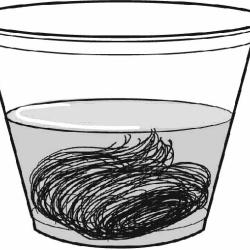Source Institutions
Source Institutions
Add to list Go to activity
Activity link broken? See if it's at the internet archive

Learners investigate how temperature affects the rate of chemical reactions by observing how steel wool reacts with various types of Kool-Aid solutions at different temperatures. The reaction is monitored as the color fades in the Kool-Aid solutions. Background information includes how the dyes change color from an oxidation-reduction reaction. Extensions include investigating how surface area and concentration affect reaction rate. Part of the "No Hassle Messy Science with a Wow" activity guide by OMSI, where all activities use only household materials.
- 4 to 24 hours
- 30 to 45 minutes
- $1 - $5 per group of students
- Ages 6 - 14
- Activity, Experiment/Lab Activity, Lesson/Lesson Plan
- English, Spanish
Quick Guide
Materials List (per group of students)
- 1 pad fine grade (#000 or #0000) steel wool
- 1 package unsweetened Kool-Aid (flavor suggestions: grape, black cherry, cherry, strawberry, watermelon-cherry, orange)
- 4 clear plastic cups, 4 oz or larger
- 1 plastic spoon
- 1 stopwatch or clock with second hand
- 1 roll masking tape
- access to hot water
- access to refrigerator
- 3 pop-top squeeze bottles
- paint color strip samples from paint store (optional) see video for details
Subjects
-
Physical Sciences
-
Chemistry
- Chemical Reactions
- Oxidation-Reduction Reactions
- Solutions
-
Chemistry
Informal Categories
- Food and Cooking
Audience
To use this activity, learners need to:
- see
- see color
- read
Learning styles supported:
- Involves teamwork and communication skills
- Involves hands-on or lab activities
Other
Foreign language versions of this resource:
Components that are part of this resource:
Includes alignment to state and/or national standards:
Access Rights:
- Free access
By:
- Oregon Museum of Science and Industry
Rights:
- All rights reserved, Oregon Museum of Science and Industry, 2007
Funding Sources:
- National Science Foundation
- Camille and Henry Dreyfus Foundation
